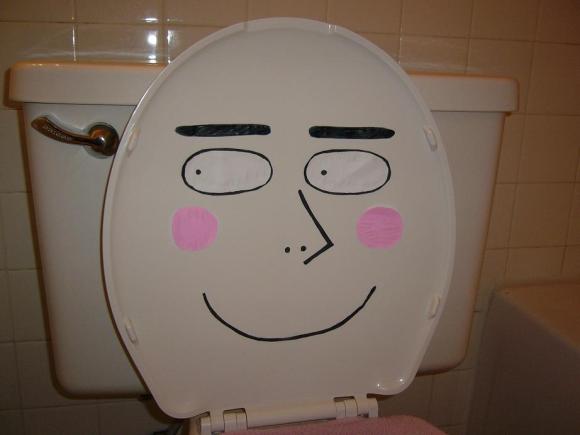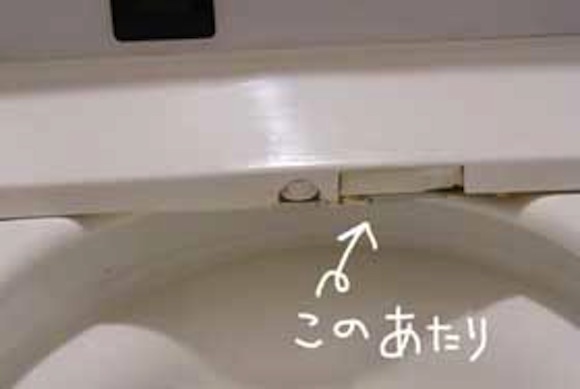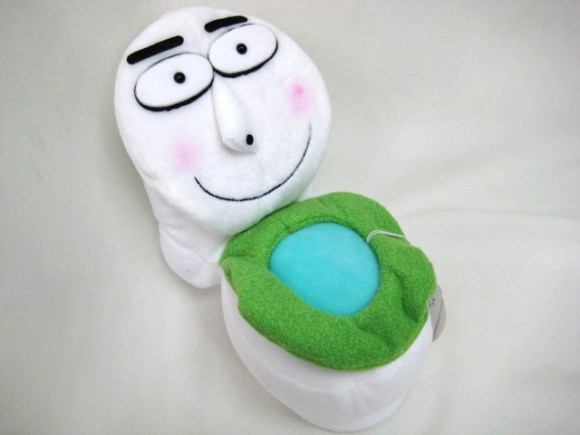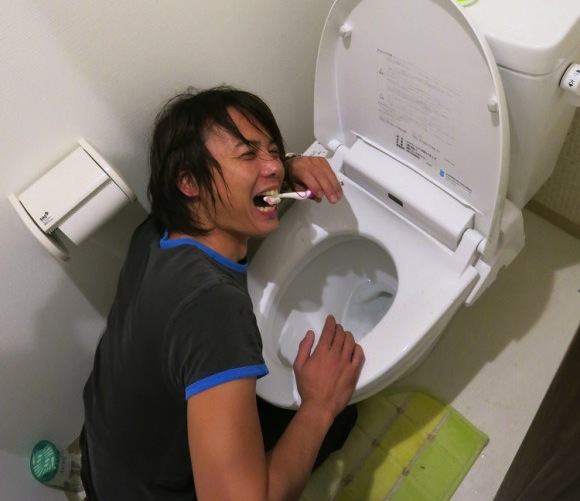
Here at RocketNews24 we love a good toilet story, whether it’s the health benefits of old-school squatters or a visit to a long drop. And the washlet toilet, with its wash-and-blow dry function, noise-masking function and hilariously perplexing control panels, is one of Japan’s most famous inventions.
But what if, just like Napoleon’s height and the Vikings’ spiky helmets, the ultimate icon of technological wizardry is also surrounded by misconception and mystery? What if (almost) everything we know about super-toilets is wrong?
Think you know your washlet? Think again.
Top five washlet misconceptions (washconceptions?):
1) It’s a washlet.
Although people call any kind of toilet that also has the function to wash your posterior a “washlet” (or ‘woshuretto‘ in Japanese), the name is actually a trademark of TOTO, the world’s largest toilet manufacturer.
▼World’s largest toilet manufacturer: not to be confused with the world’s largest toilet.
So although it may be customary to call any heated-seat, butt-washing toilet a “washlet”, if you really want to impress your Japanese friends, you should try call it by its generic name sometime 温水洗浄便座 (onsui senjou benza, meaning “hot-water cleaning toilet seat”). That is, if your idea of impressing people is to engage them in conversation about hot-water cleaning toilet seats. Otherwise, you should probably just call it a washlet like everybody else does.
2) Everyone has one!
Depending on how you count and on who you ask, between half and three-quarters of Japanese households have a washlet-style toilet. But plenty of people have non-robotic Western-style toilets, or even on-the-floor squat toilets (although admittedly those are falling out of favour). And especially in rural areas, some households actually have pit toilets, which is a whole other story completely.
3) It’s clean!
Most people probably don’t want to look too closely at the inside of their toilet, but here at RocketNews24 we take our research very, very seriously. So go on, take a look inside the bowl. I dare ya.
Next to the magical terrifying nozzle, there’s a little square part. This, my friend, is the deodorizer. Yep. This snazzy little function sucks the stinky air up after you’re done in that little room, leaving your washroom smelling fresh and clean.
▼ Thanks to this deodorizing assistant, no one will have any idea what you were doing in there!
Just don’t forget to clean out this cruddy little corner of the universe, though, or it’ll end up looking like this.
▼ Like most things in life, a washlet is only clean if you clean it.
Ewwww. Ewwwwwww. Sorry about that. Here’s a stuffed toy-let to look at instead.
▼ Much better.
4) It’s good for you…
Well, yes and no. The washlet’s main USP is that using a water function to clean yourself up is more thorough and hygienic than toilet paper. In a super-clean country like Japan, the “why wipe when you could wash?” concept was always going to be a hit. As such, people like to claim all kinds of health benefits of the washlet – if you’re constipated, it’s even said that an enthusiastic spray of the water nozzle will get things moving. But we also find warnings like this:
Please, only use the washlet [bidet function] for 30 to 60 seconds at a time, one to three times a day.
Overuse can cause inflammation and irritation, and we don’t want that. So it seems there are caveats to this “good for your health” thing. Don’t turn the bidet up too hot (ouch!), and don’t use it for too long or too often. Everything in moderation!
5) The future is washlet
TOTO, which takes its company name from an abbreviation of Tōyō Tōki (東洋陶器 Oriental Ceramics), has been trying to crack the American market for some time now, but with limited success. Converts to the washlet do tend to be evangelical about it, like this Amazon.com reviewer:
“Believe me, after using one of these for a year you will consider the 600 and some odd dollars it costs as the best bargain of your life. You will also wonder why everyone else is not using one and what took you so long to buy one. You might begin to view your neighbors as bathroom neanderthals.”
But although TOTO exports in huge numbers to China, and there’s also a San Francisco start-up trying to bring the washlet to the US, that’s about it. The washlet is a huge hit in Japan, but has simply never caught on in other countries, due to expense (a seat plus installation can easily run to US $1000) and good old-fashioned squeamishness.
▼Move along now, nothing to see here.
RocketNews24
It’s easy to look at the robotic toilet in front of you and think “this is the future!” But as far as the international market goes, until a marketing genius who can take it to the next level appears, it looks like the washlet (sorry, “hot-water cleaning toilet seat”) will remain an only-in-Japan treasure.
How do you feel about Japanese toilets? Where do you stand on the eternal paper-versus-jetstream debate? Let us know in the comments.
Source: Naver Matome, womanbenpi, Amazon.com review
Top image: o-bugyou nikki







 $11,000 luxury Japanese toilet will probably give you the best poop experience of your life
$11,000 luxury Japanese toilet will probably give you the best poop experience of your life U.S.A. now the fastest-growing market for Japan’s high-tech toilets, now selling quicker than ever
U.S.A. now the fastest-growing market for Japan’s high-tech toilets, now selling quicker than ever Japan’s bidet toilet capsule toys are here, but are they strong enough to wash your butt for you?
Japan’s bidet toilet capsule toys are here, but are they strong enough to wash your butt for you? Just how clean are Japan’s high-tech public restroom bidet-equipped toilets?
Just how clean are Japan’s high-tech public restroom bidet-equipped toilets? Eight Ways You Really, Really Shouldn’t Use a Japanese Toilet
Eight Ways You Really, Really Shouldn’t Use a Japanese Toilet Human washing machine pods coming to Japanese hotels【Photos】
Human washing machine pods coming to Japanese hotels【Photos】 We found possibly the quietest Japanese-style hotel in Tokyo’s bustling Shinjuku district
We found possibly the quietest Japanese-style hotel in Tokyo’s bustling Shinjuku district More Than a Capsule Stay: Why Solo Travelers Choose “global cabin Yokohama Chinatown”
More Than a Capsule Stay: Why Solo Travelers Choose “global cabin Yokohama Chinatown” Nagoya’s dark-red miso has continued to capture tastebuds for generations
Nagoya’s dark-red miso has continued to capture tastebuds for generations Drinking sake just got more convenient with convenience store Family Mart’s new canned brews
Drinking sake just got more convenient with convenience store Family Mart’s new canned brews Japan’s Family Mart convenience store chain adding fitness clubs to select locations
Japan’s Family Mart convenience store chain adding fitness clubs to select locations We visit Tomonoura, the scenic harbor town that inspired Studio Ghibli’s “Ponyo”【Photos】
We visit Tomonoura, the scenic harbor town that inspired Studio Ghibli’s “Ponyo”【Photos】 Japanese group to hold fashion show of colostomy bags and other stoma equipment in Paris
Japanese group to hold fashion show of colostomy bags and other stoma equipment in Paris Japan’s oldest largetooth sawfish in captivity back on display in Mie Prefecture
Japan’s oldest largetooth sawfish in captivity back on display in Mie Prefecture Here’s how you can knit yourself a bowl of ramen【Video】
Here’s how you can knit yourself a bowl of ramen【Video】 Starbucks Japan ready to get Year of the Horse started with adorable drinkware and plushies【Pics】
Starbucks Japan ready to get Year of the Horse started with adorable drinkware and plushies【Pics】 Lacquerware supplier to emperor of Japan and Pokémon team up for new tableware
Lacquerware supplier to emperor of Japan and Pokémon team up for new tableware Japan may add Japanese language proficiency, lifestyle classes to permanent foreign resident requirements
Japan may add Japanese language proficiency, lifestyle classes to permanent foreign resident requirements 7-Eleven Japan’s ramen-cooking robot whipped us up a bowl of noodles【Taste test】
7-Eleven Japan’s ramen-cooking robot whipped us up a bowl of noodles【Taste test】 Cyberpunk anime meets traditional culture in Ghost in the Shell gold leaf Japanese changing screens
Cyberpunk anime meets traditional culture in Ghost in the Shell gold leaf Japanese changing screens Disillusionment at Tsukiji’s tourist-target prices led us to a great ramen restaurant in Tokyo
Disillusionment at Tsukiji’s tourist-target prices led us to a great ramen restaurant in Tokyo 7 great places to see Mt. Fuji from without having to climb it
7 great places to see Mt. Fuji from without having to climb it Hello Kitty Choco Egg figures are an adorable trip through three periods of Japanese pop culture【Pics】
Hello Kitty Choco Egg figures are an adorable trip through three periods of Japanese pop culture【Pics】 Starbucks Japan releases new zodiac chilled cup drink for 2026
Starbucks Japan releases new zodiac chilled cup drink for 2026 Japan’s otoshidama tradition of giving kids money at New Year’s gets a social welfare upgrade
Japan’s otoshidama tradition of giving kids money at New Year’s gets a social welfare upgrade 7-Eleven Japan starts new temporary luggage storage service in over 300 branches
7-Eleven Japan starts new temporary luggage storage service in over 300 branches Starbucks teams up with 166-year-old Kyoto doll maker for Year of the Horse decorations【Photos】
Starbucks teams up with 166-year-old Kyoto doll maker for Year of the Horse decorations【Photos】 Tokyo considering law requiring more trash cans following litter increase in heavily touristed area
Tokyo considering law requiring more trash cans following litter increase in heavily touristed area Tokyo’s Tsukiji sushi neighborhood asks tour groups to stay away for the rest of the month
Tokyo’s Tsukiji sushi neighborhood asks tour groups to stay away for the rest of the month Nintendo’s Kirby now delivering orders at Kura Sushi restaurants, but not in Japan
Nintendo’s Kirby now delivering orders at Kura Sushi restaurants, but not in Japan Tokyo event lets you travel back in time, for free, to celebrate 100 years since Showa era start
Tokyo event lets you travel back in time, for free, to celebrate 100 years since Showa era start Sanrio theme park in Japan announces plans to expand into a Sanrio resort
Sanrio theme park in Japan announces plans to expand into a Sanrio resort Stamina-destroying “Paralysis Noodles” are Tokyo’s newest over-the-top ramen innovation
Stamina-destroying “Paralysis Noodles” are Tokyo’s newest over-the-top ramen innovation Survey asks foreign tourists what bothered them in Japan, more than half gave same answer
Survey asks foreign tourists what bothered them in Japan, more than half gave same answer Japan’s human washing machines will go on sale to general public, demos to be held in Tokyo
Japan’s human washing machines will go on sale to general public, demos to be held in Tokyo Japan’s deadliest food claims more victims, but why do people keep eating it for New Year’s?
Japan’s deadliest food claims more victims, but why do people keep eating it for New Year’s? We deeply regret going into this tunnel on our walk in the mountains of Japan
We deeply regret going into this tunnel on our walk in the mountains of Japan Studio Ghibli releases Kodama forest spirits from Princess Mononoke to light up your home
Studio Ghibli releases Kodama forest spirits from Princess Mononoke to light up your home Major Japanese hotel chain says reservations via overseas booking sites may not be valid
Major Japanese hotel chain says reservations via overseas booking sites may not be valid Put sesame oil in your coffee? Japanese maker says it’s the best way to start your day【Taste test】
Put sesame oil in your coffee? Japanese maker says it’s the best way to start your day【Taste test】 No more using real katana for tourism activities, Japan’s National Police Agency says
No more using real katana for tourism activities, Japan’s National Police Agency says Starbucks Japan reveals new sakura drinkware collection, inspired by evening cherry blossoms
Starbucks Japan reveals new sakura drinkware collection, inspired by evening cherry blossoms Updated cherry blossom forecast shows extra-long sakura season for Japan this year
Updated cherry blossom forecast shows extra-long sakura season for Japan this year Should you flush a Japanese toilet with your foot or your hand?
Should you flush a Japanese toilet with your foot or your hand? Poll reveals what we already know: Japanese toilets make no sense, confuse us all
Poll reveals what we already know: Japanese toilets make no sense, confuse us all W.T.F. Japan: Top 5 unique Japanese toilet functions【Weird Top Five】
W.T.F. Japan: Top 5 unique Japanese toilet functions【Weird Top Five】 Foreigner delights Japanese netizens with hilarious video about Japanese washlet toilets
Foreigner delights Japanese netizens with hilarious video about Japanese washlet toilets Toto to release next-gen Japanese toilet tech that scans and keeps track of your poop
Toto to release next-gen Japanese toilet tech that scans and keeps track of your poop Japanese toilet fans rejoice — bidet-style washlet water guns are here!
Japanese toilet fans rejoice — bidet-style washlet water guns are here! 8 Japanese gadgets you wish you had in your country!
8 Japanese gadgets you wish you had in your country! Turns out even Japanese people aren’t sure how to use Japanese-style toilets
Turns out even Japanese people aren’t sure how to use Japanese-style toilets We explore the evolution of the toilet at Kitakyushu’s newly opened TOTO Museum
We explore the evolution of the toilet at Kitakyushu’s newly opened TOTO Museum What happened when Conan O’Brien visited the Toto Japanese toilet showroom in Tokyo 【Video】
What happened when Conan O’Brien visited the Toto Japanese toilet showroom in Tokyo 【Video】 Exploding toilet in China leads to explosion of puns on the net
Exploding toilet in China leads to explosion of puns on the net Japanese toilets become even more high-tech with new floating panels
Japanese toilets become even more high-tech with new floating panels Japanese foaming bottom soap: An eco-friendly alternative to wet wipes
Japanese foaming bottom soap: An eco-friendly alternative to wet wipes China’s toilet tech showing considerable signs of improvement
China’s toilet tech showing considerable signs of improvement Japanese toilet maker Toto launches new service that guides you to empty restrooms via your phone
Japanese toilet maker Toto launches new service that guides you to empty restrooms via your phone South Korean university develops toilet that converts poop to power and pays you for “deposits”
South Korean university develops toilet that converts poop to power and pays you for “deposits”
Leave a Reply